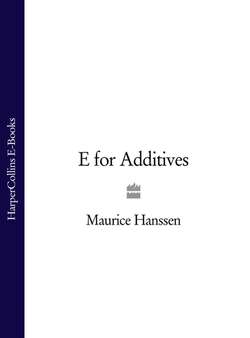Читать книгу E for Additives - Maurice Hanssen - Страница 14
Meat Products
ОглавлениеRegulations governing meat products and spreadable fish products were laid before Parliament in October 1984. Like the E-numbering provisions, these came into full operation in July 1986.
Polyphosphates (E450) allow the manufacturer to add water to meat products without it becoming obvious to the consumer. If the meat is cooked or raw and contains added water, then the producer will have to declare: ‘with not more than x per cent added water.’ X is the maximum added water content of the food. On the other hand, if the meat is uncooked and cured, such as bacon, of which more than 10 per cent is added water, then the declaration has to say ‘with not more than y per cent added water’; but that does not mean that this figure represents the amount of added water—y represents a multiple of 5 by which the percentage of water in the product exceeds 10 per cent! Finally, to make matters clear to our (presumably computer owning!) consumer—if it is cooked pure meat then the declaration has to say ‘with not more than z per cent added water’, z being an indication in multiples of 5 of the percentage of water added.
There is a list of parts of the carcass which may not be used in uncooked meat products—and may therefore be used in cooked meat products. You will be glad to know what comprehensive use manufacturers of cooked meat products can make of the slaughtered animal; they can use the brains, foot, large intestine, small intestine lungs, oesophagus, rectum, spinal cord, spleen, stomach, testicles, and udder. There has to be an argument for manufacturers to tell us just what parts of the animal are used and how much, not just to use the blanket description ‘offal’.
A meat pie weighing between 100g and 200g must have a meat content of not less than 21 per cent of the total. If the pie weighs less than 100g the meat content can shrink to 19 per cent of the food, otherwise the meat content can soar to the dizzy heights of 25 per cent as a minimum; but, of these percentages, the lean meat content need only be half so, at the worst, a quarter of a pound pork pie may contain just over a third of an ounce of lean meat—and it may include unexpected parts of the beast.
The true nature of the contents are then disguised in taste and appearance by the use of flavour enhancers, such as monosodium glutamate (number 621). It can then be coloured, flavoured and, after the addition of the appropriate amount of water, you can have at the worst, a very fatty pie but one which looks and tastes good. Though of course there are many pie manufacturers who certainly do use the finest ingredients, it would be worth their while making clear claims. The fat content of burgers and sausages is also controlled, in general so that the fat content of the meat pan of burgers does not exceed 35 per cent and of sausages, 50 per cent.
Many German meat products are labelled with their fat content. In order to be able to eat sensibly we should demand that such information be available throughout the EEC.
The British government wants to introduce fat content labelling but are being opposed by the EEC. Many responsible food manufacturers are now labelling the fat content voluntarily and this is to be encouraged.
